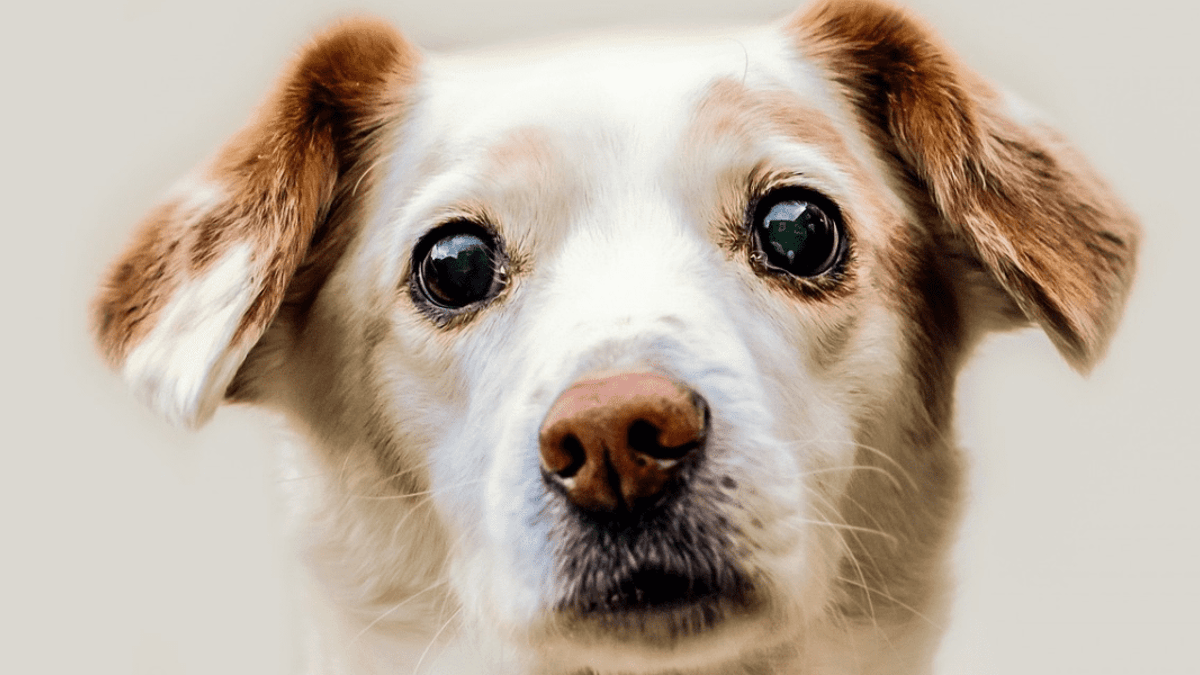Although the way dogs and cats see the world around them has significant differences from ours, their ocular structures are very similar to those of humans: as a result they can develop the same types of disorders, such as glaucoma, cataracts or, l ‘uveitis.
In this article we will talk about theuveitis in the dog. When does this eye disease occur? it is very important to intervene at the first symptoms of inflammation, since neglecting its course could lead to the loss of sight of our 4-legged friend.
What is uveitis in dogs?
Uveitis in dogs is ainflammation of the uvea, the vascular tunic of the eye, which initially manifests itself with redness, pain and discomfort in the eye. But what exactly is it about?
eye structures
The uvea is made up of 3 structures which in physiological conditions play very important roles in ensuring correct vision in our 4-legged friends:
- L’iris, or the circular and pigmented part of the eye that gives it its color. It controls the amount of incoming light by modulating pupil dilation.
- The choroidalso called the ‘posterior uvea’, is located just below the retina and is the membrane that houses the blood vessels in the eye.
- Il ciliary body, therefore the area between the iris and the choroid. It serves to focus images and produce aqueous humor.
Widespread and persistent inflammation of these structures can cause damage to the adjacent ones, favor the onset of complications and new pathologies, such as retinal detachment or even cause the dog to lose sight.
Types of uveitis in dogs
Depending on the structures of the eye involved, it is possible to classify uveitis in 3 tipi different:
- anterior uveitis: when the inflammation affects the iris and ciliary bodies;
- posterior uveitis: inflammation of the choroid;
- panuveite: there is inflammation of the posterior and anterior uvea, therefore all the structures are involved.
What causes uveitis in dogs?
Very often the cause of uveitis in dogs is related to infections bacterial, parasitic or viral. Inflammation of the dog’s eye, and specifically uveitis, is in turn a symptom of an alteration of the ophthalmological balance which must be investigated as soon as possible.
Searching for the primary cause is of fundamental importance in order to be able to establish a therapy suitable not only for the containment of the symptoms, but for the actual healing.
The most frequent causes of uveitis in dogs are therefore:
- bacterial infections,
- Parasitic infections (transmitted, for example, by fleas and ticks)
- Viral infections (e.g. leishmaniasis)
- Other eye diseases (corneal ulcers, keratitis, cataracts)
- Trauma to the eye
- Neoplasms (tumors)
- Idiopathic origin, if the cause is unknown
Symptoms can be more or less serious depending on the triggering causeand the type is also directly related to it: for example, if uveitis is secondary to Leishmaniasisanterior uveitis is likely to develop.
Symptoms of uveitis in dogs
Being an inflammation of the dog’s eye, uveitis causes very often achemore or less intense. Fido may try to scratch his eye often, or complain of discomfort.
During uveitis the vessels of the eye may visibly appear red and inflamed. The clinical picture can also be characterized by other symptoms, such as:
- photophobia (increased sensitivity to light),
- blepharospasm (spasms of the eye causing it to close repeatedly),
- miosis (contraction of the pupil),
- hyphema (bleeding of the eye chamber due to rupture of a vessel),
- thickening of the iris,
- reduction of intraocular pressure,
- corneal edema,
- color change of the iris up to the loss of visual function.
These manifestations can be similar to those of other eye diseases, therefore it is essential to consult a veterinarian for the formulation of a correct diagnosis.
How to recognize uveitis in dogs?
The diagnosis of canine uveitis is made by observing the patient’s history and clinical picture, differentiating it from other common ophthalmological pathologies, such as conjunctivitis, inflammation of the cornea, dysfunction of the lacrimal glands.
Useful diagnostic tools that will help the veterinary surgeon in identifying uveitis are:
- the eye pressure measurement (o tonometry);
- l’ocular ultrasound.
How do you treat uveitis in dogs?
The most suitable therapy can only be prescribed following a careful veterinary examination followed by the diagnosis of uveitis. Often the approach includes the use of antibiotics, non-steroidal anti-inflammatory drugs, or antibiotics and cortisone in combined action:
- antibiotics in the form of eye drops or ointments (tobramycin, gentamicin, ciprofloxacin)
- NSAID-based eye drops (e.g. piroxicam)
- combined eye drops of antibiotics and cortisone
What to do if your dog suffers from uveitis?
If you suspect that Fido has an eye disorder, see your vet as soon as possible. Uveitis, if caught early, often has a prognosis favorable.
The persistence of inflammation over time, however, in addition to being potentially very painful, can lead to the onset of complications such as glaucoma, up to the total loss of vision.
During convalescence, it is advisable to keep Fido in a dimly lit place, so as to minimize the photophobic effect. Also watch out for nutrition, which should preferably be supplemented with substances useful for restoring and preserving the functionality of the eye, such as Vitamin A (retinol).

